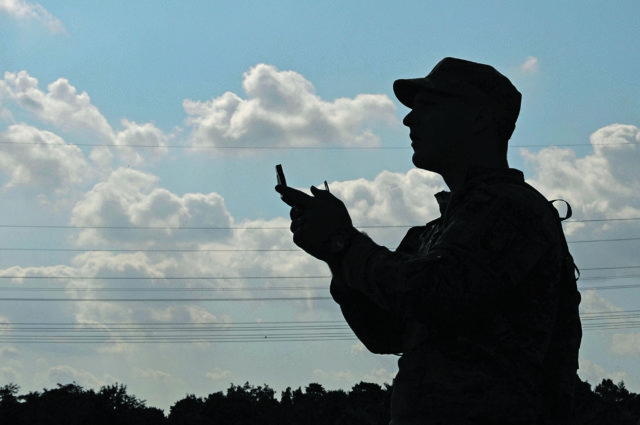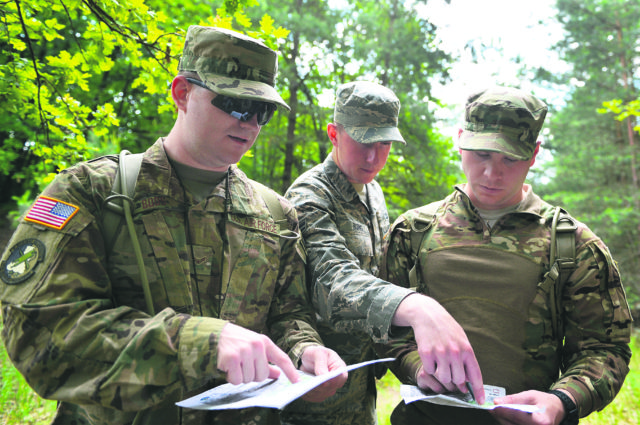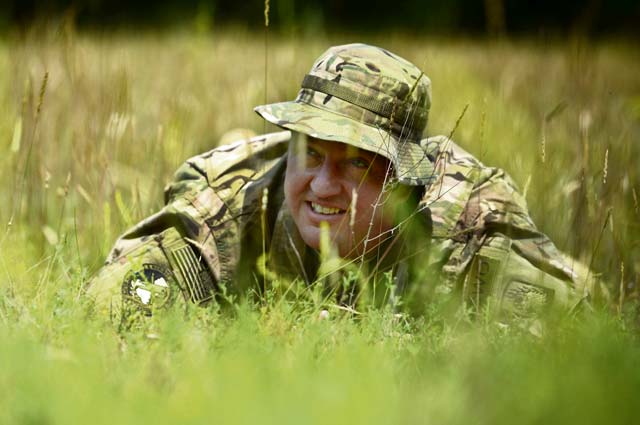
WIESBADEN — Sun Tzu, the ancient Chinese general who authored “The Art of War,” once wrote, “know the land, know the weather, your victory will then be total.”
This is why the Air Force invests plenty of time and money into training certain Airmen to watch for anything happening in the atmosphere.
Whether the sky is wide and open as the ocean, or if there is a storm brewing, weather Airmen collect vital data for planning missions. But not all these Airmen forecast weather for the Air Force; some of them work for the U.S. Army.
Known as Army weather support Airmen, they are embedded with their Army colleagues, who call them staff weather officers.
In Europe, the 7th Weather Squadron is responsible for providing the Army with expert weather-related knowledge.
“In a nutshell, we support the U.S. Army in Europe, from the highest operational levels to the lowest tactical levels,” said Capt. Brandon Alford, 7 WS readiness mobility and training chief. “Whatever it is they’re doing, we’re going to do.”
Alford said SWOs are just like any other weather Airmen, but with two differences: they work for the Army while still being Airmen, and they undergo extra training to immerse themselves into the Army world.
One of the tools the 7 WS uses to help its Airmen mold themselves into the Soldier’s way of life is Exercise Cadre Focus. It is a training program which is designed to help them stay in step with their Army colleagues.
“In order to maintain our combat mission readiness, we have to be certified in a number of common soldier tasks,” said Alford. “These are things the Army does day to day. This is stuff which is embedded into them … it’s habitual. Some of the extra things we go through allow us to function like the Army. If we can look, feel, talk, and act like the Army, then we can do a lot more to support their mission.”
Senior Airman Andrew Childress, 7 WS Detachment 4 weather forecaster, said training to work for another branch of the military was a unique experience. He pointed out the differences in culture between the Air Force and Army. At the end however, he said he was happy about his job and his training.
“At first it was strange,” Childress said. “It was like joining the military all over again, because there are different acronyms and new ranks. Everything was a little bit different, but I like it. I enjoy going out to the field, there’s a lot more hands-on stuff that we do.”
Childress explained that there are also major differences to consider when it comes to forecasting the weather for Army operations, especially if aircraft are involved. Aircraft and equipment handle weather differently depending on their size and the way they are built, and the Army uses different aircraft from the Air Force, said Childress.
In order for a weather Airman to become a SWO, they must be assigned to an Army installation. The Airman would then undergo the training necessary for him or her to be able to work with the Army. This includes the Army Weather Support Course at Fort Huachuca, Arizona.
Alford makes it a point to factor weather into the decision-making process for missions, be it an exercise or real-world.
“Weather is going to be what you shape your battlefield with, either in our favor or against the enemy,” he said. “If you look at our special operations guys, they will want fog; they want to go in under the concealment of weather. But our pilots want crystal clear weather with open skies and no wind. Weather is important to shape the battlefield and the commander’s decision-making process, and it’s one of the very first things that go into an intelligence summary.”
While SWOs are embedded with their Army brethren, they still answer to the Air Force and are bound by the Airman’s Creed, which charges them to accomplish their mission at all costs. This is why the Airmen of the 7 WS are committed to fly, fight, and win, whether rain or shine.









